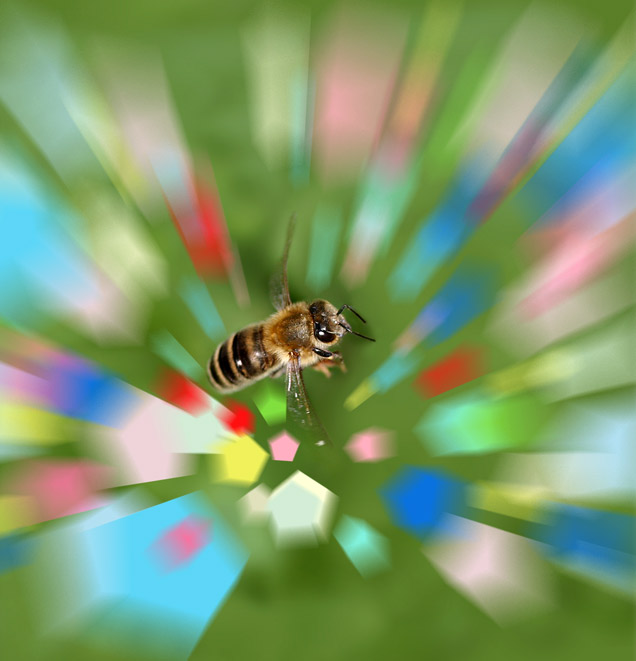The fastest color vision belongs to Bumblebee bees

How do bumblebee bees (Bombus terrestris dalmatinus) - or in Hebrew the tree bee - manage to move so quickly from flower to flower in a flowering cherry tree? Move nimbly between the fruits? The answer is that these bees see five times faster than humans, which gives them the fastest color vision among all animals - this is according to a new study, the results of which were published this week in the journal "Neuroscience".
The speed at which an animal sees depends on how quickly the light-wave cells in its eye can capture images of the world and send them to the brain for processing.
According to the data measured by electrodes implanted in the retinal cells of the bees, it turns out that the bees do this much faster than anyone else. The quick vision of the bees allows them to navigate very quickly in dappled light and full of shadows, to recognize shapes, such as the entrance to the hive and especially to find colorful flowers, which contain nectar.

16 תגובות
The wood bee = Xylocopa
The earth bombus bee = Bombus terrestris
(These are two very different types both morphologically and biologically)
By the way, in the picture there is the honey bee Apis mellifera
Besides, bees not only see "faster", they see in the ultraviolet (UV) range that is not visible to humans (without special means) and in addition they see polarized light
The assertion that this is the bee with the fastest vision seems suspicious to me, after all, there is no doubt that the researchers did not test millions of species.
To 1: It seems to me that they are simply able to perceive more frames per second than us, that is, if we perceive the world at 24 frames per second, they perceive the world at 220 frames per second.
If they see a movie shot at 24 frames per second it will look fragmented to them as if you were to see 5 alternating images per second.
To assemble
In the wood bee genus (Xylocopa) there are indeed several species but, unsurprisingly, none of them belong to the genus Bombus (Bombus).
In any case, in the record they mistakenly claimed that they were referring to the genus, but in fact, as can be easily understood from the fact that it says Bombus terrestris, they were actually referring to the species Bombus terrestris.
You are indeed right that the picture shows a honey bee and not a bumble bee, or at least a wood bee.
For Audi and Baalzebub
In the tree-bee genus there are several,
In Hebrew they are called according to their colors,
"Bombus" and "Caslikopa" are not Hebrew names,
Since in the list the reference is to gender (not gender)
After all, before "fixing" it is advisable to know the correct terminology,
In any case, in the picture... a honey bee,
The distance from the receptor to the brain is very short and the response is instinctive. In humans, the eye is in front and the optical center is in the back of the head. If my hypothesis is correct, those with small heads have an advantage over the fly and the bee. Long live the little head!
The Hebrew name of the bee is the land bumblebee:
http://lib.cet.ac.il/Pages/item.asp?item=688
To 8
You cracked me up 🙂 hahahahahahahahaha
A situation arises where you knock your paw forward, without catching the fly.
Flies see slow ocean that's why they avoid our caps.
Does it depend on the brain or the natural sensors in the eye? What makes us the bottleneck?
The Hebrew name for the bees described in the article is "Bombus bee" and not wood bee. A wood bee is another type that also exists in our country and is known as "Xylokopa". It is advisable to check the matter of the Hebrew companies with a qualified source before publishing.
The flies leave them spinning
You can quickly see:
Probably the reference here is to the time difference between the presentation of a (colored) light pulse and the cell's response.
Fresting insects have receptors, metabolically expensive, that respond very quickly to light changes.
One of the most important parameters is the total neural distance.
I still wouldn't trade with her
I didn't understand what you mean, they deserve fast?